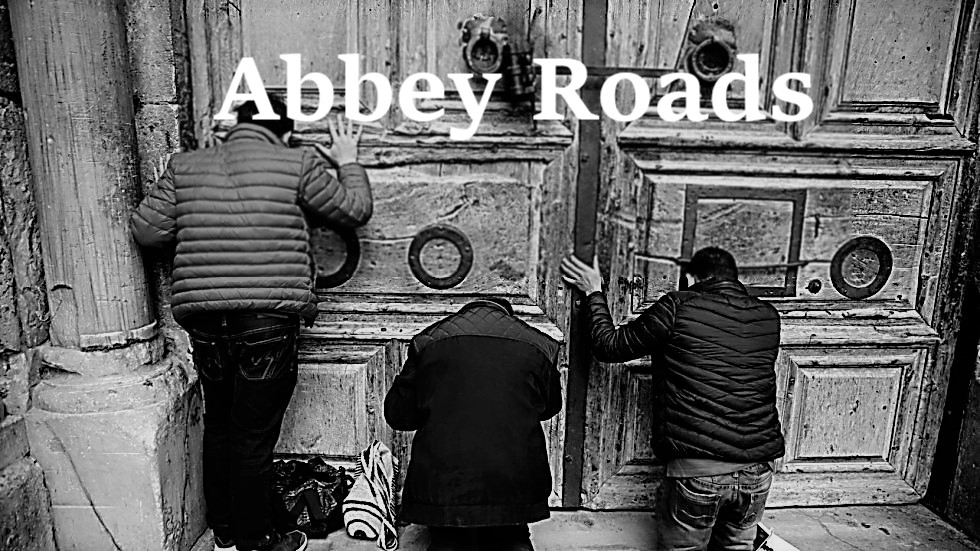Sarcophagus
of Stilicho, 4th century, Basilica of St. Ambrogio, Milan
Obviously there are some reviews of the Pope's new book which really annoy me - my earlier post on the subject was meant in jest. What I hate is how journalists and critics will isolate a quote out of context, manipulate it and present it as the whole story. For instance, "Pope says there were no animals at the Nativity." I haven't read the book yet, but it surely must be that the Holy Father discussed how the Gospels do not recount details such as the presence of animals... Not to worry. As I said in my earlier post, a lot of stuff isn't mentioned in the Gospels.
That said, artistic narratives from as early as the 2nd century, have illustrated the Gospels on sarcophagi, illuminated manuscripts, icons, frescoes, and in medieval times, stained glass windows, and so on, up to our day. (In Rome, Christmas wasn't really celebrated until the 4th century - the bas-relief shown at top is a 4th century example of the Nativity.) Common sense, human experience and understanding 'flesh out' the probable realities not mentioned in the Gospels.
As I implied in a comment on my earlier post, my problem isn't with the Pope's book - it is with the commentators and critics of the work. One journalist's main objection seems to be "by whose authority" does the Pope speak?
So the Pope is writing a book on the life of Jesus as reported at the Vatican to complete his three volume opus. So what? Was the Pope there when Jesus was born/ Does he have some special insight into the life of Jesus? As a continuation from Peter the First Pope is there some special relationship when Jesus supposedly gave Peter the keys to the kingdom ... David CrammerObviously the author has issues with the Pope - not so much with the Infancy narratives. Benedict XVI, the 'theologian', joins other scholars who are no doubt in agreement with the theological and historical speculation found in the Holy Father's third volume on the life of Jesus of Nazareth.
The Nativity of the Lord
Over the centuries, the Nativity image tends to resist change in subject matter and even in composition. The changes that do occur help us to understand the underlying doctrinal principles.
The Ox and the Ass
No animals attend Christ's birth in the gospels of Matthew (cached) or Luke (cached), but an ox and ass appear in the images very early on -- for example, in the Nativity block at left from a 6th-century Palestinian icon. The reason is the influence of the Pseudo-Gospel of Matthew (cached), in which an ox and ass adore the child in fulfillment of the prophecy in Isaiah1:3 (cached). Jesus' fulfillment of Old Testament prophecies is a central theme of Christian doctrine, so Nativity iconography stays with the ox and ass all the way into modern times (viz. the 20th-century Nativity portal of the Sagrada Familia in Barcelona). This is true even when Mary herself has been left out (example).
Cave or Stable?
The doctrine of fulfillment of prophecy is also behind an often noticed difference between Nativities in the Greek East and the Latin West. By the Renaissance, western art always places the birth of Christ in a stable, whereas eastern images put it in a cave. We see the cave mentioned as early as the 2nd century by Justin Martyr, and even he appears to be working with an old received narrative. Yet the cave is not in the Gospels, nor does it seem consistent with the manger in Luke, which would imply a stable. So why was it made a part of the story, and why did it disappear in the West?
Justin saw the cave as a fulfillment of Isaiah 33:16, which in his Greek text read, "he shall dwell in the lofty cave of the strong rock." But there is no cave in Latin Vulgate of that verse (which reads "the fortifications of rocks shall be his highness"), so in the West there was no prophecy to fulfill. Both Pseudo-Matthew and the influential Protevangelium of James try to combine cave and stable by having Mary relocate the baby from the former to the latter a few days after the birth, but eventually the cave disappeared from western thinking about the Nativity. By the time of the Golden Legend (13th century) the cave is gone and the baby is simply born in a stable "upon the hay that lay in the rack."
Images in the West follow this changing venue. A12th-century French relief uses an ambiguous design to accommodate both the stable and the cave traditions. The child's woven basket only suggests a manger and thus a stable. The disposition of the figures follows that of the 6th-century icon but puts them in a square, recessed space that could be either a cave or a built structure. A13th century mosaic in Rome puts Mary in a cave and the child in a stable! In an early 14th-century Nativity, Duccio di Buon Insegna effects a compromise between cave and stable: The figures and even the star are arranged just as in the earlier works, but the space is now a stable that has been inserted into a mountain. - Source


No comments:
Post a Comment
Please comment with charity and avoid ad hominem attacks. I exercise the right to delete comments I find inappropriate. If you use your real name there is a better chance your comment will stay put.